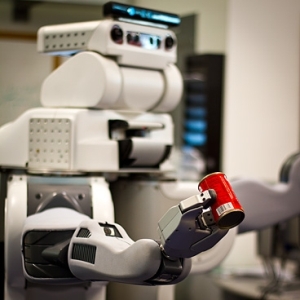MIT Researchers have formulated an algorithm, which enables robots to procrastinate planning of tasks and to react to variations in environments. The hierarchical algorithm established could result in a reduction in cost required for performing complex tasks.
 Real-life robot
Real-life robot
Conventional robotic programs involved two steps of planning including geometric motion planning and task planning. The task to be implemented will be determined by the task planner and the actual implementation of the task will be carried out using geometric motion planner. Program developers would then formulate complex and detailed plans for the robots to execute. Any variation in environmental variables would impact the efficiency of task execution.
Under the new approach, the robots are capable of reacting to environments that vary with time due to their own activities and external parameters. The robots behave similar to humans. They take responsibility for a larger action, divide it into smaller activities and react to variations. The robots perform tasks step by step. The only challenge lies in deciding, which tasks to be implemented immediately, and which tasks can be put off.
Using the new algorithm, the robot will perform the task effectively, while adapting to a changing environment. Researchers will design algorithms to enable robots to distinguish the steps that can be procrastinated, and the ones that can be advanced in the process. A Willow Garage PR2 robot was used for this purpose.